|
Yellow: Nozomi, Red: Hikari, Black: Kodama Destination F: Hakata (Fukuoka), K:Kokura, H: Hiroshima, O: Okayama, Hi: Himeji, S: Shin Osaka, N: Nagoya, ha: Hamamatsu, sz: Shizuoka, M: Mishima, T: Tokyo #: Extra train in busy season and does not run every day Train with square form: does not run on holidays Train underlined: does not run on Saturday Tokyo Station 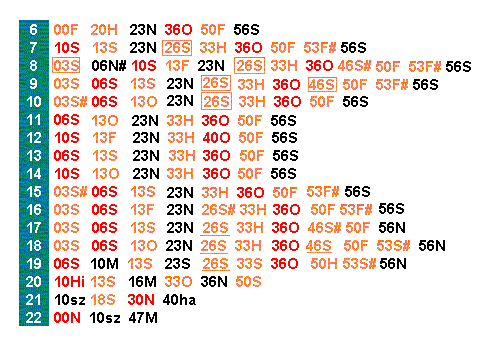 |
|
Nagoya Station (Westbound, for Shin Osaka and Hakata) 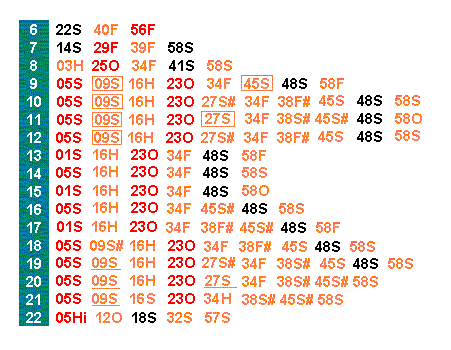
|
Nagoya Station (East bound, for Tokyo) 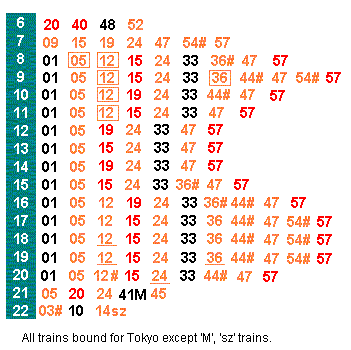
|
|
Kyoto Station (Westbound, for Shin Osaka and Hakata) 
|
Kyoto Station (East bound, for Tokyo) 
|
|
Shin Osaka Station (Westbound, for Hiroshima and Hakata) 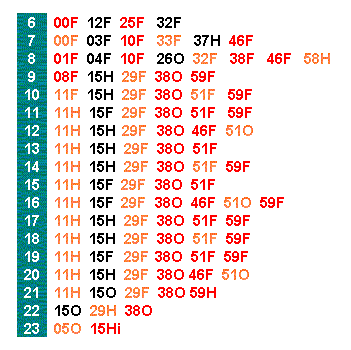 |
Shin Osaka Station (East bound, for Tokyo) 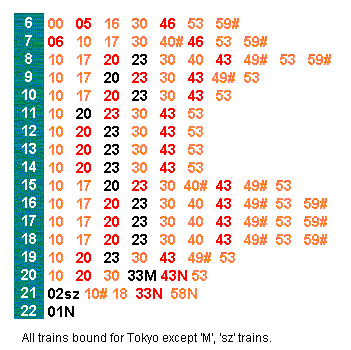
|
|
Hiroshima Station (Westbound, for Hakata) 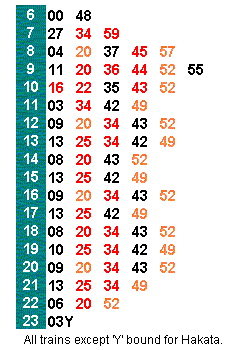
|
Hiroshima Station (East bound, for Shin Osaka and Tokyo) 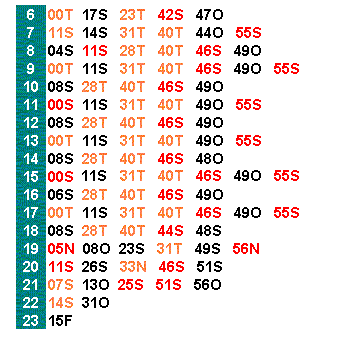
|
|
Hakata Station 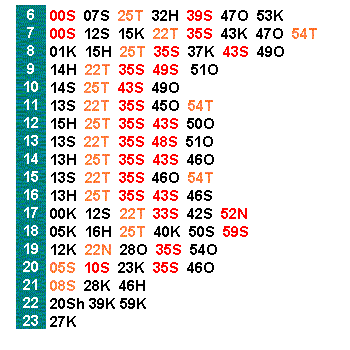
|
|
Tohoku, Joetsu and Nagano Shinkansen Timetable
|
Tohoku Shinkansen Train type Red: Hayate, Green: Yamabiko, Black: Nasuno, Blue: Tsubasa, Orange: Komachi Destination H: Hachinohe, M: Morioka, S: Sendai, K: Koriyama, N: Nasu Shiobara, Sh: Shinjo, Y: Yamagata Joetsu and Nagano Shinkansen Train type Green: Toki, Black:Tanigawa, Blue: Asama Destination N: Niigata, E: Echigo Yuzawa, T: Takasaki #: Extra train in busy season and does not run every day Tokyo Station (Tohoku) 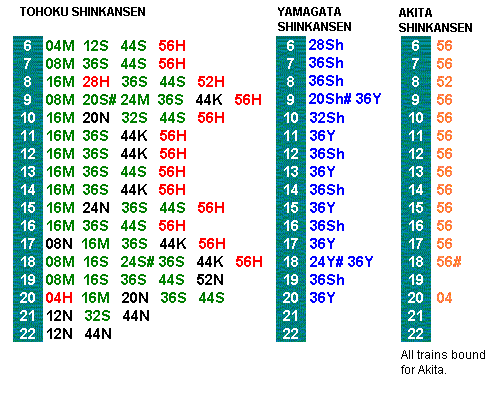
|
|
|
Tokyo Station (Joetsu and Nagano) 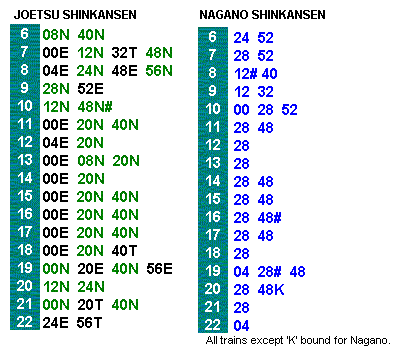
|
|
|
Sendai Station (Northbound for Hachinohe) 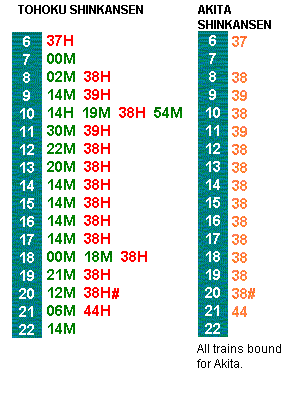
|
Sendai Station (Southbound for Tokyo) 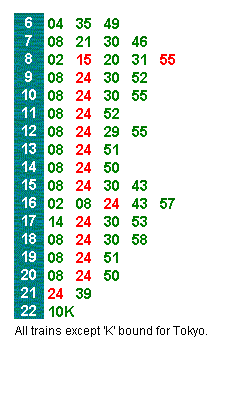
|
|
One great advantage of Shinkansen is its fast speed, but other important advantages are its capacity to carry many passengers everyday and convenient, frequent service like urban subway. Tokaido Shinkansen which runs through area of quite large population and active industries in particular achieve the role as convenient mass transportation. In Tokaido Shinkansen, ten or eleven trains per hour run in busy time, and surely the busiest high speed railway system in the world. TGV in France is also attracting many passengers, and about ten trains per hour run in south-east line to Lyon and Marseille, Atlantic line to Tours and Nantes, and Nord line to London and Brussels. But capacity of train set is different, 1323 passengers in the case of 16 cars set of type 700, and 1634 in 16 cars set of double-decked type E4, while 485 passengers in TGV Atlantic train set, and 545 passengers in TGV-Duplex (double-decked). Many trains put two train sets together, 970 in TGV Atlantic and 1090 in TGV-Duplex, still smaller capacity than Shinkansen. Moreover, unique aspect of Shinkansen schedule is that trains of different speed run same double track. Pattern to stop stations is different according to the type "Nozomi", "Hikari" and "Kodama", and "Kodama" train wait for the fast "Nozomi" train to take over in many station. Schedule is quite complicated but precise. It fills various kinds of demand, both long distance and short distance passengers. In other high speed railways in the world, all trains run in same speed and train rarely takes over other train. (Schedule after October 2003) 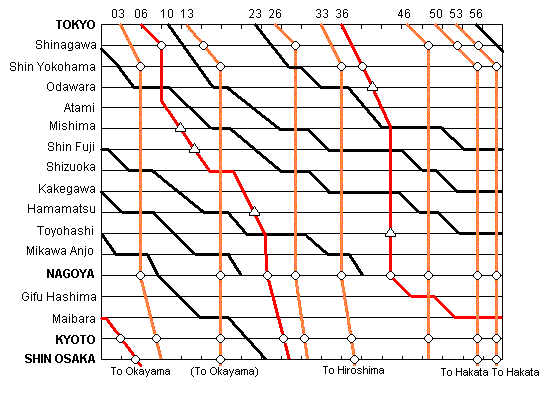 Currently, it is next to impossible to increase Tokaido Shinkansen train. It is said that maximum capacity is fifteen trains per hour. Three or four forward trains run between Tokyo station and train depot, and adding passenger train running eleven services per hour, totally about fifteen trains depart Tokyo station. In October 2003, Shinagawa station opens next to Tokyo station. It becomes possible to add three or four trains per hour departing from Shinagawa station without using Tokyo station, because train departing Shinagawa is not influenced from forward train between Tokyo station and train depot. However, Shinkansen passengers are not increasing now due to recession of Japan and competition with cheaper air services, so trains are not increased immediately in October 2003. |